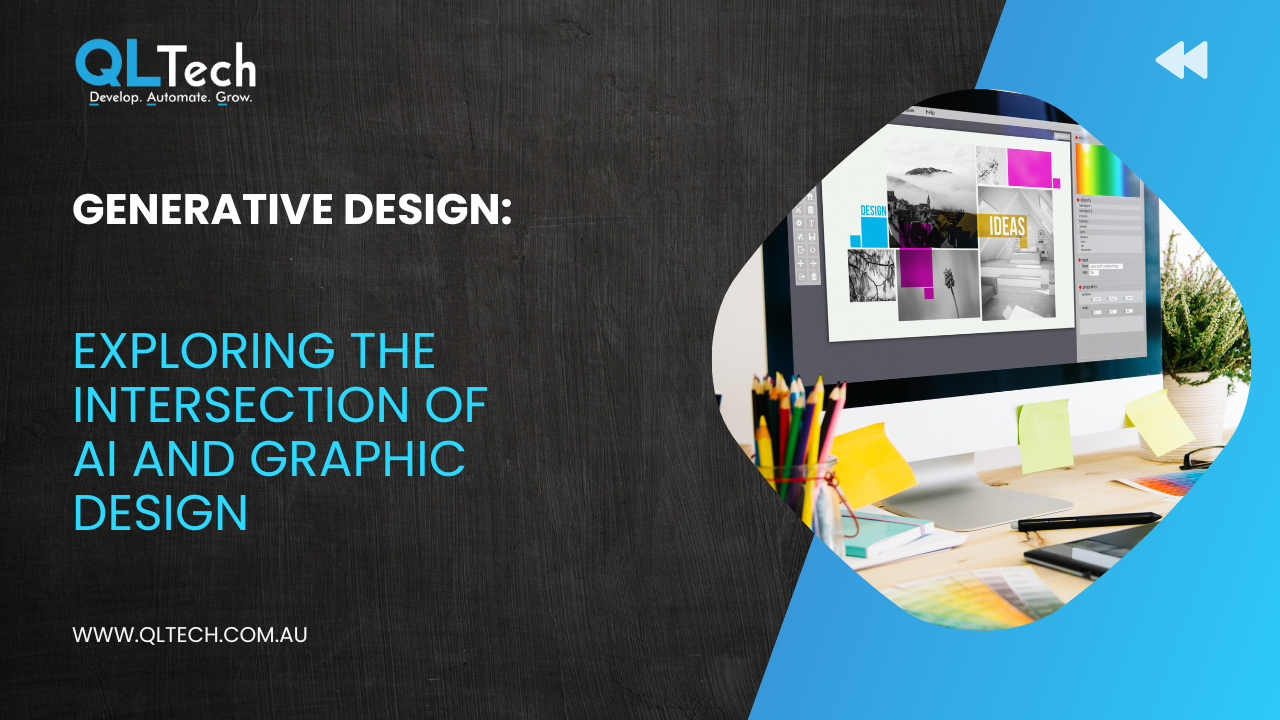Generative Design: Exploring the Intersection of AI and Graphic Design
Generative design, situated at the crossroads of artificial intelligence (AI) and graphic design, represents a transformative paradigm in the creative realm. This cutting-edge approach empowers designers by leveraging algorithms and machine learning to co-create visually stunning and innovative designs. This article delves into the core principles, applications, and the profound impact of generative design on the field of graphic design.

1. Understanding Generative Design:
- Algorithmic Creativity: Generative design involves the use of algorithms and AI to produce creative outputs autonomously, challenging traditional notions of human-centric creativity.
- Learning from Data: Generative design systems learn and adapt from extensive datasets, gaining insights into patterns, styles, and design principles to inform their creative processes.
2. AI-Powered Design Tools:
- Collaborative Design: Generative design tools act as collaborative partners for designers, providing suggestions, variations, and insights throughout the creative journey.
- Adaptive Learning: These tools continuously refine their understanding of design preferences based on user interactions, offering a personalised and evolving design experience.
3. Automated Iteration and Exploration:
- Rapid Prototyping: Generative design enables swift exploration of design iterations, allowing designers to visualise numerous possibilities efficiently.
- Continuous Refinement: AI-driven algorithms refine design options based on user feedback, fostering a dynamic process of iteration and improvement.
4. Customisation and Personalisation:
- Tailored Solutions: Generative design excels in creating customised and personalised design solutions, adapting to individual preferences and requirements.
- Dynamic Outputs: Designs evolve in response to user input, ensuring a personalised and tailored approach that aligns with diverse creative visions.
5. Enhancing Creativity and Innovation:
- Idea Generation: Generative design serves as a catalyst for idea generation, providing designers with a rich source of inspiration and unconventional design possibilities.
- Pushing Creative Boundaries: By breaking traditional design constraints, generative design encourages designers to explore uncharted territories, fostering a culture of innovation.
6. Streamlining Workflows:
- Efficient Processes: Generative design optimises workflows by automating repetitive tasks, allowing designers to focus on strategic and conceptual aspects.
- Time and Resource Savings: Automated processes contribute to time efficiency and resource savings, enhancing the overall productivity of design projects.
7. Bridging Art and Technology:
- Harmony of Artistry and Algorithms: Generative design bridges the worlds of art and technology, showcasing the synergy between human creativity and machine intelligence.
- Innovative Expressions: Designers can experiment with novel forms of artistic expression, combining their creative intuition with the computational capabilities of AI.
8. Ethical Considerations:
- Human-AI Collaboration: Generative design raises ethical considerations regarding the collaboration between human designers and AI, prompting discussions on responsibility, accountability, and the role of AI in the creative process.
- Bias Mitigation: Designers need to be mindful of potential biases in algorithms and ensure a conscious effort to mitigate and address any unintentional biases in generated designs.
Conclusion: Shaping the Future of Graphic Design
Generative design stands as a powerful force shaping the future of graphic design. By embracing the capabilities of AI, designers can unlock new dimensions of creativity, efficiency, and innovation. While generative design offers unprecedented opportunities, it also prompts reflection on the ethical implications of AI-driven creativity. As designers navigate this intersection of AI and graphic design, they have the chance to redefine the boundaries of what is creatively possible and contribute to a future where human ingenuity collaborates harmoniously with artificial intelligence.